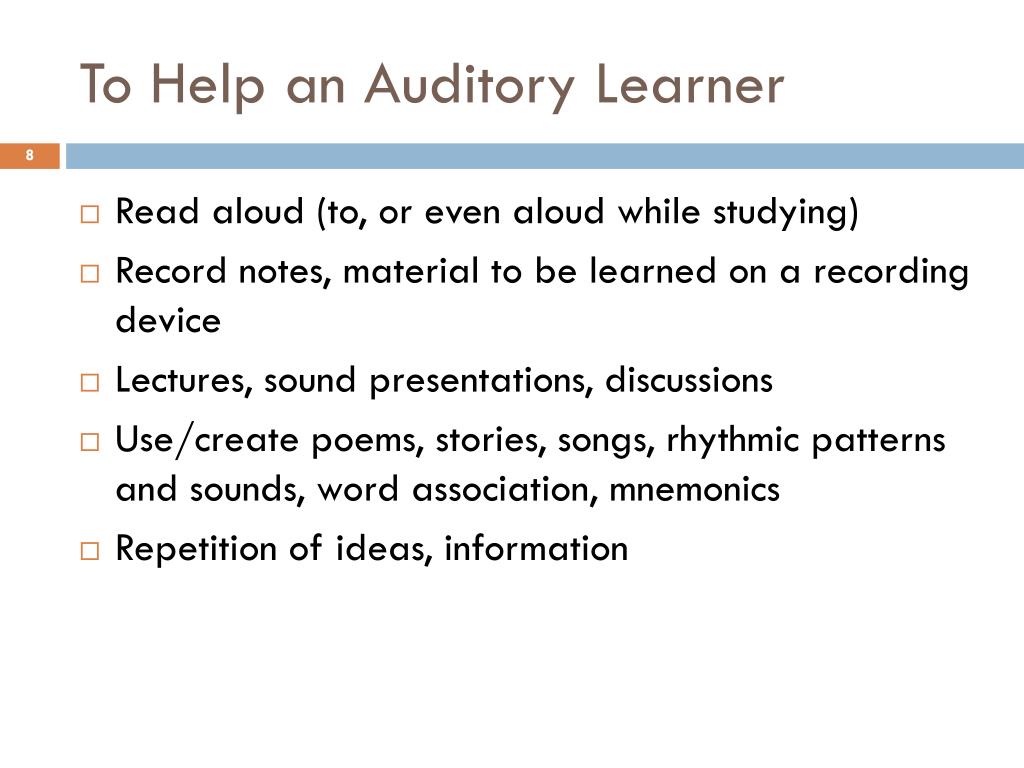

It also raises the possibility that learning styles do matter-perhaps a match between students’ individual learning styles and their study strategies is the key to optimal outcomes. That might explain why instructional style in the classroom matters little. But is the classroom really where most of the serious learning occurs? Some might argue that, in this era of flipped classrooms and online course materials, students master more of the information on their own. Most previous investigations on learning styles focused on classroom learning, and assessed whether instructional style impacted outcomes for different types of learners. Research by Polly Hussman and Valerie Dean O’Loughlin at Indiana University takes a new look at this important question. It is clear that people have a strong sense of their own learning preferences (e.g., visual, kinesthetic, intuitive), but it is less clear that these preferences matter. In fact, there are several studies that contradict this belief. A recent review of the scientific literature on learning styles found scant evidence to clearly support the idea that outcomes are best when instructional techniques align with individuals’ learning styles. Just because a notion is popular, however, doesn’t make it true. Indeed the notion that people learn in different ways is such a pervasive belief in American culture that there is a thriving industry dedicated to identifying learning styles and training teachers to meet the needs of different learners. This preference for one approach over another when learning new information is not uncommon.
#Auditory learner strategies manual#
Think owner’s manual versus IKEA instructions. My husband, on the other hand, prefers to study the diagrams and then jump right in.

I read the instructions from start to finish, and then reread and execute each step. Then when beginning an exam or learning activity, the person can be humming that song to themselves to boost their motivation and confidence.When it comes to home projects, I am a step-by-step kind of girl.

Perhaps it is a song like "Eye of the Tiger" which stirs motivation. Some even report that during a test they can recall a song that was playing while they were learning certain facts.Įven persons with low levels of aural learning styles may find it useful to think of a popular jingle from a television commercial and "put the facts to music" using the rhyme and rhythm of the jingle as a memory aid.Ī final strategy for aural learners is to identify music that motivates them. Examples of this include "The Alphabet Song" which young learners use early in their education.Īnother useful technique is to have music playing in the background as you are studying.Īural learners often report that they can focus much better when music is present than in silence. One of the most often used advantages is that aural learners can "set facts to music" which helps them to learn the information.Īural learners can often "make up a song" about a concept to serve as a memory aid. When you hear certain songs, does it evoke strong emotions?Ī person with an aural learning style may often say these phrases:

if you prefer to study with music playing, choose something with no lyrics, and keep the volume low.work in quiet areas to minimize hearing music, television or other distractions.study with a partner and take turns reading to each other - discuss key concepts.rehearse/repeat information either silently in your head, or out loud."subvocalize" as you take notes - repeat information to yourself as a quiet "mumble" that's barely audible.repeat information silently to yourself.sit away from doors, windows, and other sources of noise.sit towards the front of the room so you can hear well and so that you won't be distracted by the noises other students make.listen to instructions and information given orally.


 0 kommentar(er)
0 kommentar(er)
